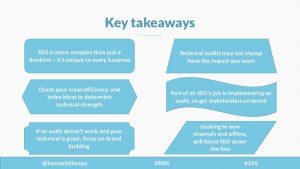This article was written based on an SMX London 2018 presentation given by Hannah Thorpe, you can view the full slides here. Originally posted on white.net
Following a simple SEO checklist is great for most sites, but what happens when it doesn’t work? This talk from SMX London covers off when to reaudit and when brand might be your best solution to gain that all-important traffic.
How do I rank?
How does a site rank? Sometimes it feels overwhelming to try and explain to someone outside the SEO profession how to get a web page ranking. One way is to give someone a checklist of SEO best practices:
-
- Having crawlable URLs whose content is easily indexed
-
- Keyword research with appropriate keywords, both primary and secondary.
-
- Investigate what SERP says is ranking for relevant search queries (competitors)
-
- Utilise your writing skills to bets create content fitting the core audience group
-
- Craft a compelling title/description to appear in the rich snippet in SERP
-
- Intelligently employ the keywords to the on-page copy
-
- Use rich snippets and schema to enhance search visibility
-
- Optimise the page to load fast on every device and make it secure (HTTPS)
- Use the internet to help promote your content to the right audience groups
BUT, this is not everything, at all.

Analyse performance, reaudit and look at brand
Look at useful metrics like visibility, seen in Search Metrics, which focuses on the estimated number of clicks gained in SERP. If you’ve done a technical audit, do another one. If your first audit was implemented sporadically and now your ecosystem is constantly changing without a change control process and lots of different people working in it. So, is that everyone then? The project has become inefficient and disjointed.

Audit better
You need to audit better. Whenever you’re doing something, think about being actionable, understand the individuals involved in the processes, prioritise time versus impact, and make sure you quantify everything. Essentially, be resource and time efficient, before, during and after a project.

Being Actionable
Be actionable from the off. Does the site have GTM? What’s been able to be actioned previously? What CMS is the site on? Who has FTP access? Are they in-house? How many people have to sign off your change? What percentage of pages are you trying to change? How long do all your suggested changes take to make? Where’s the resource? What other integrations are on site? All these questions can and should be answered.
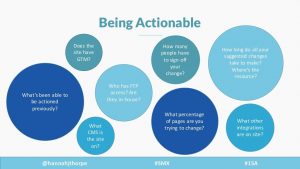
Individuals
The people involved in the audits need to be assessed before anything is agreed – the stakeholders’ report card. You need to ask: what’s their job role? What are their accountabilities? What are their KPIs? Do they have internal supporters? Do they have internal conflicts? What is their work history? How much time is available to them? What is their knowledge of SEO? Any extra details – hobbies, family, etc? All this information allows you to form a true understanding of how they will slot into the project.
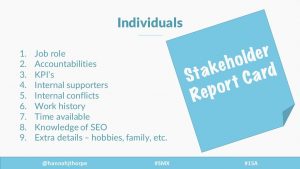
Prioritise
Each task in the project needs to be laid out in terms of what’s the timeframe to complete it? Who is carrying it out? What’s its complexity? What impact will it have? What’s its priority? Each task will either be an individual task or a milestone task, so understand where your resource is coming from for implementation.
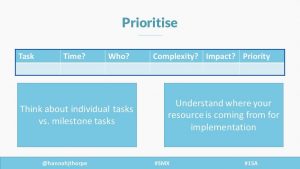
Quantify everything
Make sure everything on the site is being quantified and recorded. For each section of the site, ask yourself which pages are in good health and which have issues. How is this changing over the time you’ve been aware of the site? Set up automated audit alerts so you’re aware of new issues cropping up throughout the process.

Index bloat and crawl efficiency
Is your indexing weird? In Google Search Console, does it say that 1,000 pages are indexed while if you carry out a site search in Google, over 200,000 are displayed? Alarm bells are probably ringing if so. If you do a brand search in Google, do the top results make sense? Any strange 302s? Are the sitemaps making sense? All this analysis will give you a good understanding of how the site is functioning.

Crawl Efficiency
Is your site allowing Google to crawl it efficiently? Are the most important pages being indexed? Cross-reference crawling tools to understand how many pages are being indexed which shouldn’t be. When you look at the robots.txt, are there any strange, unwanted inclusions?

No time? Focus on brand
So what if that doesn’t work/isn’t possible/consumes all your time? It’s then time to focus on brand. For instance, who ranks for Adidas trainers? Thankfully for Adidas, it ranks rather well for that search query. This is from years of good SEO and brand recognition.

Use data to understand the market
But what if it’s so new and unique, no one searches? Well, if done right, complex SEO should drive demand. Marketing teams have so much data on this stuff and yet we don’t work alongside ‘brand’ enough at all. What drives brands to be successful in certain industries? In your industry, why have sites prevailed while others have not? Building a core brand is imperative to drive a business forward and this is achieved by targeting the right people.

Marketing is all about your customers
There’s a 3-step process for marketing your brand to improve its visibility. First of all, understand your market – know what’s out there and why. Next, build a genuine connection by showing you understand your customers. Finally, become the expected result, be at the forefront of your customers’ minds.
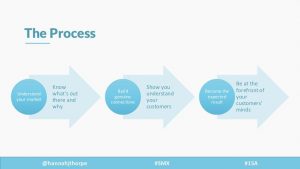
Understand the market size
There may be a heap of people in Brazil spending money but more people spend more in Germany. Build genuine connections. Use persona builders to form a persona if who you’re looking to target. Create surveys to interact with more people and build an understanding of their wants and needs. People are creatures of habit, so satisfy those habits to get them onboard. Then become the expected result, go offline with leaflets and billboards, it’s not just about digital. But staying online and optimising for featured snippets will improve your visibility.
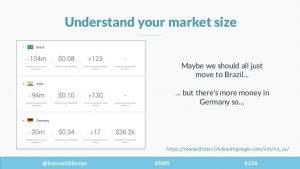
Measuring brand stuff is hard
The best way to measure the visibility of your brand is through brand keywords. If you’re an e-commerce site then brand + product search queries will give you an understanding of which areas need improving and those which are doing well. Similarly, If the average position of a brand search query is remaining static and CTRs are improving then this shows a better recognition of the brand in the SERPs.
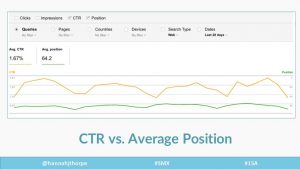
Key takeaways
-
- SEO I more complex than just a checklist – it’s unique to every business
-
- Check your crawl efficiency and index bloat to determine the technical strength
-
- If an audit doesn’t work and your technical is good, focus on brand building
-
- Technical audits may not always have the impact you want
-
- Part of an SEO’s job is implementing an audit, so get stakeholders on board
- Looking at new channels and offline will boost SEO down the line
